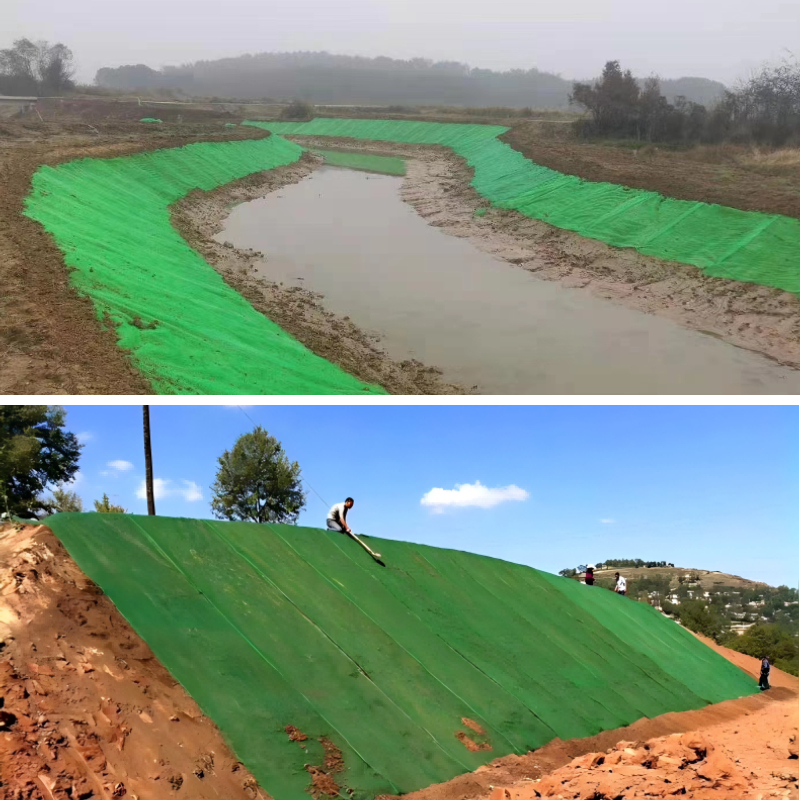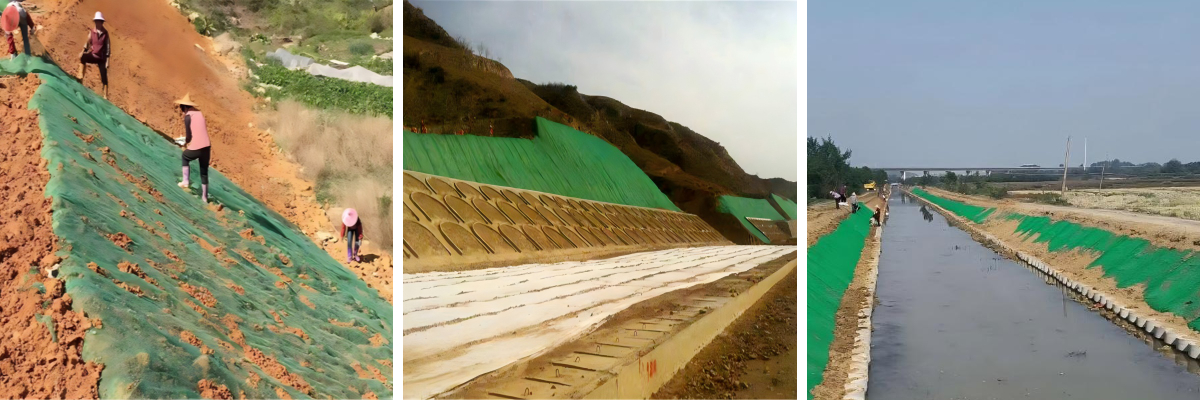Beyond Seed Blankets: The Superior Protection of 3D Vegetation Nets
For decades, the go-to answer for controlling erosion on slopes and embankments has been the standard seed blanket or erosion manage mat. While these options are higher than nothing, they regularly signify a two-dimensional strategy to a three-d problem. They lay on pinnacle of the soil, imparting a thin layer of protection, however they fail to combine with the soil shape itself. When confronted with high-velocity water flow, steep grades, or unstable soils, these traditional techniques can falter, leading to steeply-priced repairs and endured environmental degradation.
The evolution of this technological know-how has led to a some distance greater strong and tremendous solution: the 3D Vegetation Net. This isn't always simply a blanket; it is a bio-engineered soil reinforcement gadget that works in concord with plant roots to create a durable, dwelling mat of stability. This article delves into why 3D Vegetation Nets are the present day popular for fantastic and sustainable Bio-Engineered Erosion Control.
The Limitations of Traditional Seed Blankets
Traditional seed blankets, normally made of straw, coconut fiber, or skinny artificial netting, serve a fundamental purpose: to keep seeds in vicinity and defend them from being washed away by means of preliminary rainfall. However, their safety is superficial.
Shallow Root Anchoring: They furnish a medium for preliminary seed germination, however do little to information or aid deep root development. The root gadget frequently stays limited inside the blanket itself.
Vulnerability to Shear Stress: Under the shear pressure of centred water flow, these mats can be effortlessly undercut or peeled away from the soil surface, taking the fledgling vegetation with them.
Limited Structural Integrity: They add minimal tensile power to the soil profile. On steeper slopes the place soil slippage is a risk, a widespread blanket provides nearly no resistance.
For tasks the place long-term balance is non-negotiable, a greater built-in answer is required. This is the place perception the Dimensions of 3D Vegetation Net technological know-how turns into critical.
What is a 3D Vegetation Net? A New Dimension in Erosion Control
A 3D Vegetation Net is a geosynthetic cloth engineered with a thick, three-dimensional, web-like structure. It is most usually manufactured from UV-stabilized polyamide or different long lasting polymers, forming a bendy and porous matrix. Unlike a flat blanket, this product is characterised by using its giant thickness, which creates a good sized area for soil retention and root development.
The core innovation lies in its structure. When unrolled and anchored to the slope, the net's 3-dimensional cavities turn out to be stuffed with soil and boom media. This diagram is the basis of its performance, a key characteristic particular in any complete 3D Vegetation Net Specifications sheet. Seeds are then hydraulically mulched or sown immediately into this crammed matrix, the place they germinate inside a protected, strengthened environment.
The Mechanism of Superior Performance: How 3D Nets Create a Living Mat
The effectiveness of this gadget is a direct end result of its multi-faceted method to stabilization, actually embodying the precept of Bio-Engineered Erosion Control.
1. Immediate Surface Armor and Hydrological Control
Upon installation, the thick, entangled filaments of the internet act as a bodily barrier that dissipates the strength of rainfall and overland flow. This dramatically reduces soil particle dislodgement and the formation of rills. The third-dimensional shape additionally will increase floor roughness, slowing down water pace and encouraging infiltration, which in addition reduces runoff and erosion.
2. Deep, Integrated Root Reinforcement
This is the most large advantage. As plant seeds germinate inside the matrix, their roots are naturally guided down via the Dimensions of 3D Vegetation Net shape and into the underlying soil. The internet does no longer simply lie on the surface; it turns into a permanent, built-in section of the soil ecosystem. The root structures intertwine with the artificial filaments, developing a coherent, bolstered "living mat" with noticeably excessive tensile strength. This composite material—soil, roots, and net—can face up to huge shear stresses that would smash traditional blankets or unvegetated soil.
3. Micro-Climate Creation for Enhanced Growth
The thickness of the internet affords a shaded, moist microenvironment that is best for seed germination and seedling establishment. It protects in opposition to solar scorch and helps maintain necessary moisture, promotion a thicker, healthier, and greater resilient vegetative stand.
Decoding the Specifications: What to Look For in a Quality Product
When choosing a 3D Vegetation Net, it is quintessential to seem to be past advertising and center of attention on the technical 3D Vegetation Net Specifications that dictate performance. Key parameters include:
Material & UV Resistance: The polymer ought to be stabilized in opposition to photo voltaic degradation to make certain long-term performance earlier than and after vegetation establishment.
Thickness (mm): This immediately defines one of the main Dimensions of 3D Vegetation Net products. Greater thickness generally equates to higher soil retention, deeper root zones, and greater load-bearing capacity.
Tensile Strength: Measured in kN/m, this shows the material's inherent electricity and its capability to face up to stretching and breaking below force.
Open Area Percentage: A ample open location (typically >90%) is fundamental to enable for unimpeded plant boom and does now not create a barrier to rising shoots.
These specifications, when matched to your project's slope, soil, and hydraulic conditions, make sure you are imposing a certainly engineered solution.
Ideal Applications for 3D Vegetation Nets
The top-quality overall performance of 3D Vegetation Nets makes them the favored preference for difficult tasks the place failure is now not an option. Key functions include:
Steep Roadside and Railway Embankments: Where security and long-term get entry to for renovation are difficult.
Riverbanks and Shorelines: To face up to steady hydraulic shear forces from currents and wave action.
Landfill Caps and Mining Restoration: On quintessential containment slopes the place integrity is paramount for decades.
Any High-Risk Slope the place vegetation institution is necessary for everlasting stability.
Conclusion: Investing in Long-Term Stability
While ordinary seed blankets have their region on gentle, low-risk landscapes, the complicated erosion challenges of cutting-edge development and restoration initiatives demand a greater state-of-the-art solution. The 3D Vegetation Net represents a paradigm shift from transient cowl to permanent, Bio-Engineered Erosion Control.
By perception the quintessential Dimensions of 3D Vegetation Net technological know-how and the significance of its particular 3D Vegetation Net Specifications, engineers and assignment managers can make an knowledgeable decision. This funding goes past preliminary erosion control; it is an funding in growing a stable, self-sustaining, and resilient panorama that will suffer for years to come. Move past the barriers of the previous and construct a stronger, greener future with the established safety of 3D Vegetation Nets.
Contact Us
Company Name: Shandong Chuangwei New Materials Co., LTD
Contact Person :Jaden Sylvan
Contact Number :+86 19305485668
WhatsApp:+86 19305485668
Enterprise Email: cggeosynthetics@gmail.com
Enterprise Address: Entrepreneurship Park, Dayue District, Tai 'an City,
Shandong Province









